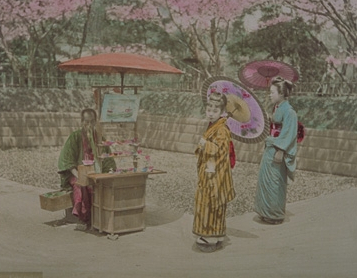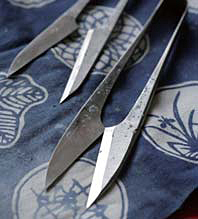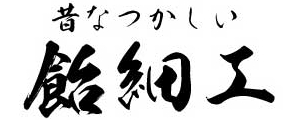What is the meaning of amezaiku?
"ame" means candy and "zaiku" means craftsmanship. "zaiku" is a variant of "saiku" for phonetic convenience.
What is amezaiku made of?
It's mizuame -syrup like thick liquid sugar. There are various ingredients of mizuame, but the one used for traditional amezaiku is probably one derived from "malt", "rice", "potato", or "corn". Of these, the "malt" type has been around for a long time and is the origin of ame, but it is expensive nowadays.
Is amezaiku edible?
Those made of traditional ingredients are edible. Those made of decorative candies are listed as "not edible" in the book. Decorative candies are chemically synthesized and do not become humid and sticky even in the rainy season, and do not melt even in the middle of summer. I can tell that because I tested them myself. They are wonderful substances and horrible at the same time. They are so-called artificial sweeteners, so they are not inedible, but I do not use them.
What does amezaiku taste like?
The taste is simple sweetness. It's sweet, but not too sweet.
When were amezaiku invented?
If we consider Amezaiku to mean "the crafting of candy into shapes, mainly animals, using Japanese old type scissors," its origins can be traced back to the Edo period (1603-1868). Roughly speaking, the history of Amezaiku can be said to be 300 years long. In the early days, It was called differently. For more information, see the History of Amezaiku.

Where did amezaiku originate?
In the same way, if we consider Amezaiku to mean "the crafting of candy into shapes, mainly animals, using Japanese old type scissors,", I believe that Amezaiku began in Edo (present Tokyo). The origin of ame itself came from China via the Korean Peninsula to Kyoto, the capital of Japan at that time. Hence, when it was later introduced to Edo, it was described as kudari-ame -"descendance" candy. I think there are three necessary reasons why the form that remains today began in Edo as below.
- Domestic production of candy became possible.
- Mass production of Japanese scissors became possible.
- Peaceful period in Edo.
Also see the History of Amezaiku.
What is unique about Amezaiku?
Similar forms exist in China and Southeast Asian countries, but the distinguishing feature of Japanese Amezaiku is the use of scissors.
What is interesting is that in the Korean Peninsula, they use regular type scissors, but instead of using them for crafting, they cut off a large piece of the blade from the middle of the scissors and use it just as a sound maker.

What temperature is amezaiku?
At first, the temperature of the candy is around 60 to 80 degrees Celsius (140-176 Fahrenheit). It depends on the season. It also depends on the temperature at the demonstration site. When the temperature is low, the temperature of the candy is low, and when the temperature is high, so is the candy. If the temperature of the candy is not adjusted properly, the candy will harden too fast and the work cannot be done, or the candy will not harden and will not hold its shape. 80℃ is extremely hot, and although it cools down during the kneading stage, it can cause burns if not careful.
